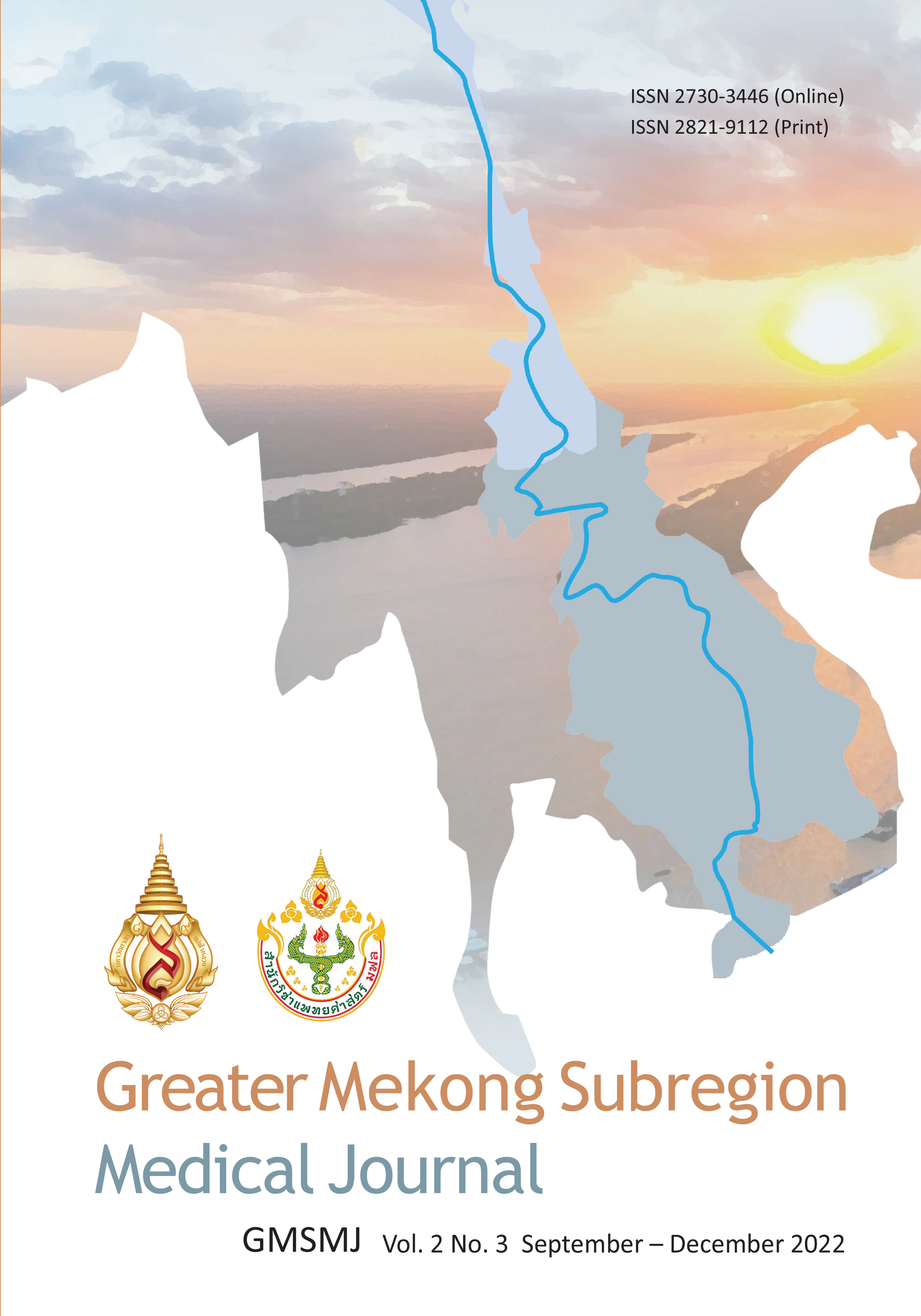Computational Analysis of Active Phytochemicals Came from GC-MS Chromatogram of Rhynchanthus longiflorus Hook.f. against Thymidine Phosphorylase Enzyme
Keywords:
In silico analysis, Rhynchanthus longiflorus Hook.f., Thymidine phosphorylaseAbstract
Background: A previous study reported fifteen identified compounds that were obtained from an essential oil extract from Rhynchanthus longiflorus Hook.f., carried out by using the GC-MS technique, which revealed possible potential candidates for further drug development in cancer chemotherapy.
Objective: This study aimed to determine and predict the most effective compound obtained from the GC-MS chromatogram of the essential oil extract from Rhynchanthus longiflorus Hook.f., active against the human thymidine phosphorylase enzyme, again carried out using computational analysis.
Materials and methods: All compounds identified by GC-MS analysis were threedimensionally optimized and docked with a well-prepared crystal structure of the human thymidine phosphorylase enzyme. Additionally, the in silico pharmacokinetic properties, bioactive activities, and toxicity profiles prediction were determined.
Results: Amongst these identified compounds, beta-eudesmol showed the highest binding affinity against thymidine phosphorylase, with a binding energy of -7.44 kcal/mol, showing better values than that of the reference compound (5-iodouracil). The pharmacokinetic properties, bioactive activities, and toxicity profiles of all compounds met the acceptance criteria.
Conclusion: This study suggests that an active phytochemical, revealed by the GC-MS chromatogram, may be a most promising candidate drug, acting on the thymidine phosphorylase enzyme, and so should be studied further.
References
Elamin YY, Rafee S, Osman N, et al. Thymidine phosphorylase in cancer; Enemy or friend? Cancer Microenviron. 2016; 9 (1): 33–43.
Moghaddam A, Zhang HT, Fan TP, et al. Thymidine phosphorylase is angiogenic and promotes tumor growth. Proc Natl Acad Sci USA. 1995; 92 (4): 998–1002.
Bijnsdorp IV, Peters GJ, Temmink OH, et al. Differential activation of cell death and autophagy results in an increased cytotoxic potential for trifluorothymidine compared to 5-fluorouracil in colon cancer cells. Int J Cancer. 2010; 126 (10): 2457–68.
Nontasit N, Kanlayanapaphon C, Mekanawakul M, et al. Taxonomic studies and traditional uses of Zingiberaceae in Khao Luang National Park, Nakhon Si thammarat province, Thailand. Walailak J Sci Technol. 2015; 12 (8): 643–58.
Prasanthkumar MG, Skornickova J, Sabu M, et al. Conservation Priority and Phytogeographical Significance of Rhynchanthus Longiflorus Hook. f. (Zingiberaceae): A Rare, Endangered Species from Mizo Hills, NE India. Curr Sci. 2005; 6 (88): 977–80.
Prachaya S, Suchada W, Wasana K, et al. Ethnobotany of Akha in Huay Yuak Pa So village, Mae Fah Luang district and Ban Mai Patthana village, Mae Suai district, Chiang Rai province. TJB. 2011; 1 (3): 93–114.
Teerapattarakan N, Rujjanawate C. The Presence of Monoterpenes in Rhynchanthus longiflorus Hook.f. Confirms the Value of Its Use in Akha Folk Medicine. GMSMJ. 2021; 1 (2): 65–70.
Mitsiki E, Papageorgiou AC, Iyer S, et al. Structures of native human thymidine phosphorylase and in complex with 5-iodouracil. Biochem Biophys Res Commun. 2009; 386 (4): 666–70.
Kim S, Chen J, Cheng T, et al. PubChem in 2021: new data content and improved web interfaces. Nucleic Acids Res. 2021; 49(D1): D1388–95.
Daina A, Michielin O, Zoete V. Swiss ADME: a free web tool to evaluate pharmacokinetics, drug-likeness and medicinal chemistry friendliness of small molecules. Sci Rep. 2017; 7: 42717.
Filimonov DA, Lagunin AA, Gloriozova TA, et al. Prediction of the biological activity spectra of organic compounds using the pass online web resource. Chem Heterocycl Compd (N Y). 2014; 50 (3): 444–57.
Banerjee P, Eckert AO, Schrey AK, et al. ProTox-II: a webserver for the prediction of toxicity of chemicals. Nucleic Acids Res. 2018; 46 (W1): W257–63.
Morris GM, Huey R, Lindstrom W, et al. AutoDock4 and AutoDockTools4: Automated docking with selective receptor flexibility. J Comput Chem. 2009; 30 (16): 2785–91.
Pettersen EF, Goddard TD, Huang CC, et al. UCSF Chimera--a visualization system for exploratory research and analysis. J Comput Chem. 2004; 25(13): 1605–12.
Cui W, Aouidate A, Wang S, et al. Discovering anti-cancer drugs via computational methods. Front Pharmacol. 2020; 11:733.
Rutkowska E, Pajak K, Jóźwiak K. Lipophilicity--methods of determination and its role in medicinal chemistry. Acta Pol Pharm. 2013; 70 (1): 3–18.
Pugmire MJ, Cook WJ, Jasanoff A, et al. Structural and theoretical studies suggest domain movement produces an active conformation of thymidine phosphorylase. J Mol Biol. 1998; 281 (2): 285–99.
Gould MN. Cancer chemoprevention and therapy by monoterpenes. Environ Health Perspect. 1997; 105 Suppl 4: 977–9.
Acharya B, Chaijaroenkul W, NaBangchang K. Therapeutic potential and pharmacological activities of β- eudesmol. Chem Biol Drug Des. 2021; 97 (4): 984–96.
Mathema VB, Chaijaroenkul W, Karbwang J, et al. Growth inhibitory effect of β-eudesmol on cholangiocarcinoma cells and its potential suppressive effect on heme oxygenase-1 production, STAT1/3 activation, and NF-κB downregulation. Clin Exp Pharmacol Physiol. 2017; 44 (11): 1145–54.
Downloads
Published
How to Cite
Issue
Section
License
Copyright (c) 2022 Greater Mekong Sub-region Medical Journal

This work is licensed under a Creative Commons Attribution-NonCommercial-NoDerivatives 4.0 International License.






